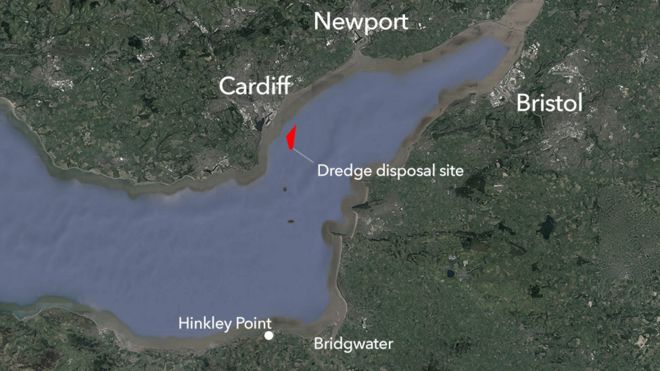Friends of the Earth Barry&Vale oppose Penarth Town centre traffic and parking changes
www.penarthtowncouncil.gov.uk/ptcmedia/uploads/20.08.03A-Town-Centre-Proposals-Amended-for-PTC.pdf
Encourage and facilitate street-trading - via partial pedestrianisation - yes!
But no to the drastic 1-way traffic changes and crammed car-parking.
Disabled parting in lower Glebe St - yes - but with sufficient spacing.
The Active
Travel (Wales) Act requires priority in any new scheme for walking and
cycling. A traffic scheme motivated to maximise parking is out of sync.
Though not the highways or planning authority, the Town Council should be
aware of the transport policies of the VoG Council and WG, especially
the latter’s guidance on active travel, and therefore indicate how to
include cycling priority in their plan. The parking and one-way ring road
proposals appear to ride roughshod over the Vale’s Active Travel network plans
agreed with the Welsh Government. They pay
no regard to “walkable neighbourhoods,
where a range of facilities are within walking distance of most residents, and
the streets are safe, comfortable and enjoyable to walk and cycle.”
The Well-being of Future Generations Act
requires planning for sustainability, which excludes any increase in car-parking.
No justification is given for replacing the on-street parking lost under
pedestrianisation. Parking places have
already been lost due to Covid measures, but there are still many
vacancies. Nobody can foretell the
post-Covid ‘new normal’, with more shopping on-line and increased readiness to
walk and cycle for health and fitness. The
WG offers funds to increase the attractiveness of active travel; try that first
and wait to see how things work out before trying any disruptive schemes.
A one-way
traffic scheme of necessity forces longer vehicle journeys, with noise air
pollution and CO2 emissions as direct effects.
Further, in deterring some walking and cycling trips, the one-way scheme
has indirect effects that may be as large or larger.
Any planning
has to recognise existing walking and cycling
routes and links to
them.
1. Penarth Haven (Pont-y-Werin bridge) –Paget Rd – Arcot St - Hickman Rd
– Penarth Station – Railway path (National Cycleway Route 88)
2. Cardiff Bay
Barrage –Paget Rd – Clive Place (or Albert Rd) – Beach Hill – Esplanade (Wales
Coastal Path) and Stanwell Rd – The Railway
3. Pont y Werin to
Penarth centre via Windsor Rd - Plassey St to join Arcot St route, or to the
end of Plassey St to join the Albert Rd route to the Esplanade.
Windsor Rd from the
Plassey junction through to the Esplanade and route 2. to the Railway are current 5yr projects in the
2017 map of the Penarth Cycling INM Network https://www.valeofglamorgan.gov.uk/Documents/Our%20Council/consultation/Active-Travel/Penarth-CYCLING.jpg Windsor Rd and Albert-Stanwell Rd are routes
in the 2017 map of the Penarth Walking INM Network. Converting Albert and Stanwell to parking
streets with chevron parking contradicts the Vale Council’s active travel
plans, required in the Act and agreed with Welsh Government. Bridgeman Rd is likewise designated a walking
route. Increasing the traffic by the one-way system may increase pollution and
worsen safety, requiring these to be taken into consideration.
The Windsor
Rd route passes through the section proposed to be pedestrianised.
The Town
Council’s plan fails to say whether cycling is to be permitted in it. If you
propose to divert it via the one-way traffic ring, you have to address the
conflict with Active Travel policy.
We are not
aware of any problems with cycling in the shopping streets. Occasional cycling the ‘wrong way’ on wide
lower Glebe St will be resolved if pedestrianised.
We support pedestrianisation
as long as cycling is permitted for access to shops etc.
The WG Active Travel guidance
advises two-way cycling on 1-way streets “wherever safe and practicable”.
Contraflow cycling up Stanwell Rd and Albert Rd needs to be provided, both for
trips to the town centre and for the local cycling network. It has
priority over changing parking to chevron-style.
The proposed chevron parking does not
provide for larger vehicles, neither in width (all spaces are the minimum 2.4m,
2.7m is becoming standard) or length (4.8m). Unless a 1-metre buffer is
provided as in Arcot St, protruding vehicles present a hazard while policing
the parking to stop them is not easy.
2.4 m leaves to little space for frail elderly stick-users and
wheelchair users. If this minimal
cramped chevron parking is excluded, the claimed advantage in cramming in more
cars becomes much less.
Allowing buses on the Stanwell
Rd-Rectory Rd route is important for bus operation. Waiting time at the Windsor Terrace terminus
with driver access to the public toilets is needed. More bus stops are needed
to encourage sustainable travel to the centre.
- one at lower end of Windsor shops
(or outside the RAFA club)
- unofficial stops in Plassey St
(for 89) need to be in plans, at Glebe St and High St junctions; these
need build-outs (removing parking places)
- the stop at bottom of Clive Place
needs a build-out.
- the terminus stop on bottom of
Albert Rd needs to take 2, occasionally 3 buses and a big bus-shelter
- the first Stanwell Rd stop should
be at the Rectory Rd corner, close to the Library.
Blocking half the 'clock' roundabout for unloading and pick-up is unacceptable. Emergency and other vehicles need passage, while the 88 bus turns around it.
Equality Act discrimination.
Despite the Town
Council claims to make Penarth ‘disabled-friendly’, no consideration is given
to contrary aspects of these plans. The
over-narrow echelon parking replaces roadside parking suitable for disabled
persons. Buses less accessible with bus-stops on slopes making boarding
difficult for disabled persons. The
proposals discriminate against women as cyclists as Planning Policy Wales
considers women are more
likely to be deterred from cycling by perceived dangers of cycling on the
one-way high-traffic ring.













